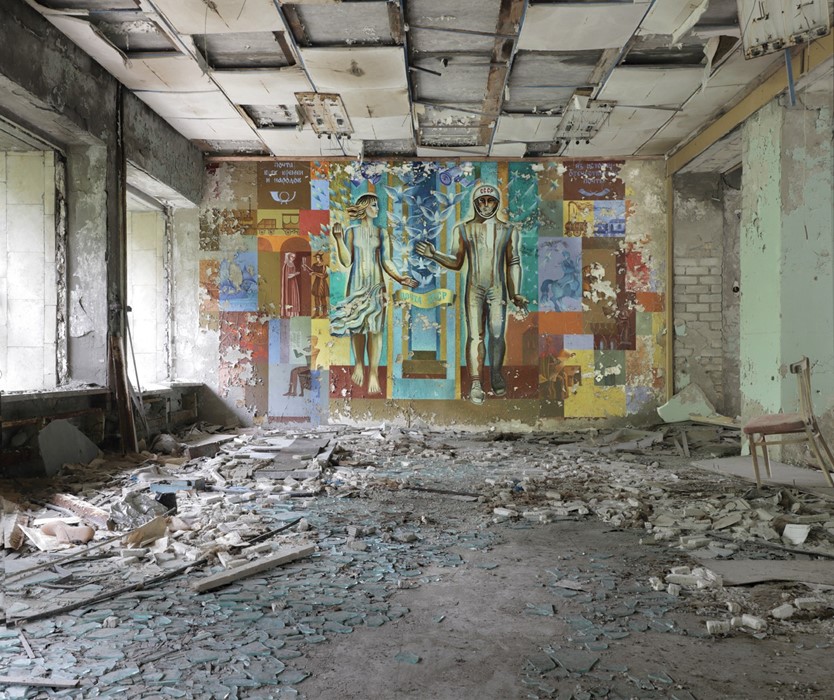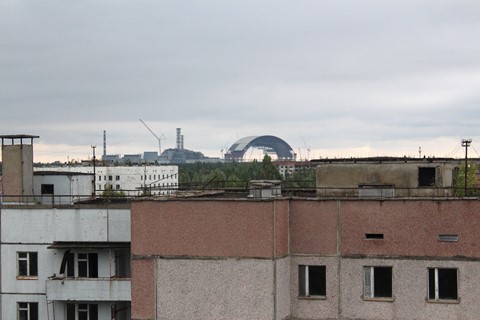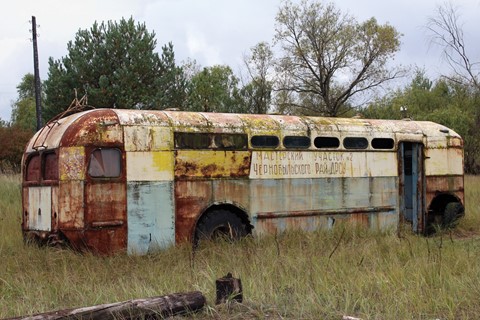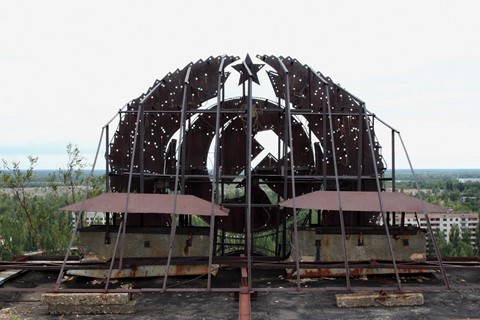Writer and photographer Darmon Richter’s new book Chernobyl: A Stalkers’ Guide represents a study of the contemporary Exclusion Zone not as a “dead zone”, but as a “new Eden populated by scientists, settlers and scrap-metal thieves”
On April 26, 1986, six weddings took place in Pripyat, Ukraine. All five of the city’s schools were open and children played in puddles in the street once dismissed from their classes. As researcher and author Darmon Richter writes in FUEL’s latest book Chernobyl: A Stalkers’ Guide, at precisely 01:23:40 that morning, what should have been a routine test of Chernobyl Power Station’s Reactor 4 went seriously wrong, and the resulting catastrophe tore a hole in the fabric of the Soviet Union so large that the regime would fray away to nothing just five years later. Aware only of an undisclosed incident at the power plant, and not of its unprecedented and still unrivalled severity, the people of a doomed city carried on as normal until they were eventually given just two hours to evacuate, with the promise that they would return just three days later, but they never did.
Founded on February 4, 1970, Pripyat was what the Soviets called an ‘atomgrad’ – an atomic city, dedicated to nuclear power – and for a few hours in April 1986, its past and present existed in parallel. The gaping chasm between Pripyat: the Soviet Union’s ninth atomgrad and Pripyat: Ukrainian ghost city was momentarily sealed by the delay between the occurrence of a deadly nuclear incident and those in charge deciding what to do next. It is worth observing that where propaganda and crisis collide there will always be a notable pause – a reluctance to act – in which a regime will decide whether to save itself or its people.
As Richter states in the opening line of his new book, “There are two Chernobyls: a place, and an event”. In Chernobyl: A Stalkers’ Guide, he journeys into the contemporary Exclusion Zone, venturing deeper than any previously published account, documenting the findings of his exploration through arresting photography and a story-teller’s account of the communities that have, and continue to, exist within it. “This is a book about a mythopoetic landscape that authors, artists and filmmakers had been dreaming of long before the Chernobyl disaster itself had happened,” he writes. “It is therefore a study of Chernobyl not as a dead zone where history was suddenly halted in 1986, but as a new Eden populated by scientists, settlers and scrap-metal thieves; where hordes of tourists come by day to explore a living memorial to the fragility of civilisation; and where ‘stalkers’ conduct their own nocturnal quests: rites of passage born from a blend of post-Soviet counter-culturalism, sci-fi escapism, and perhaps a yearning for spiritualistic self-discovery.”
Just as the name Chernobyl has become synonymous with death, catastrophic failure and inescapable tragedy, the architectural and graphic aesthetics of the Soviet era are more often than not the evident starting point for production designers who want to communicate a culture of militant control or dystopian unease. As Richter explains, “Cinema did not predict Chernobyl, but it did a lot to prepare a place for it in the public consciousness”. Popular culture and audiences hungry for any glimpse into the possible futures of a world now in throes of rapid technological advancement were enchanted by books such as Aldous Huxley’s Brave New World, George Orwell’s 1984 and Philip K. Dick’s Do Androids Dream of Electric Sheep – which would be reimagined as Ridley Scott’s iconic 1982 film Blade Runner – and the leaders of the Soviet Union knew they had to limit their population’s exposure to any materials that may inspire people to question the motives or legitimacy of the regime.
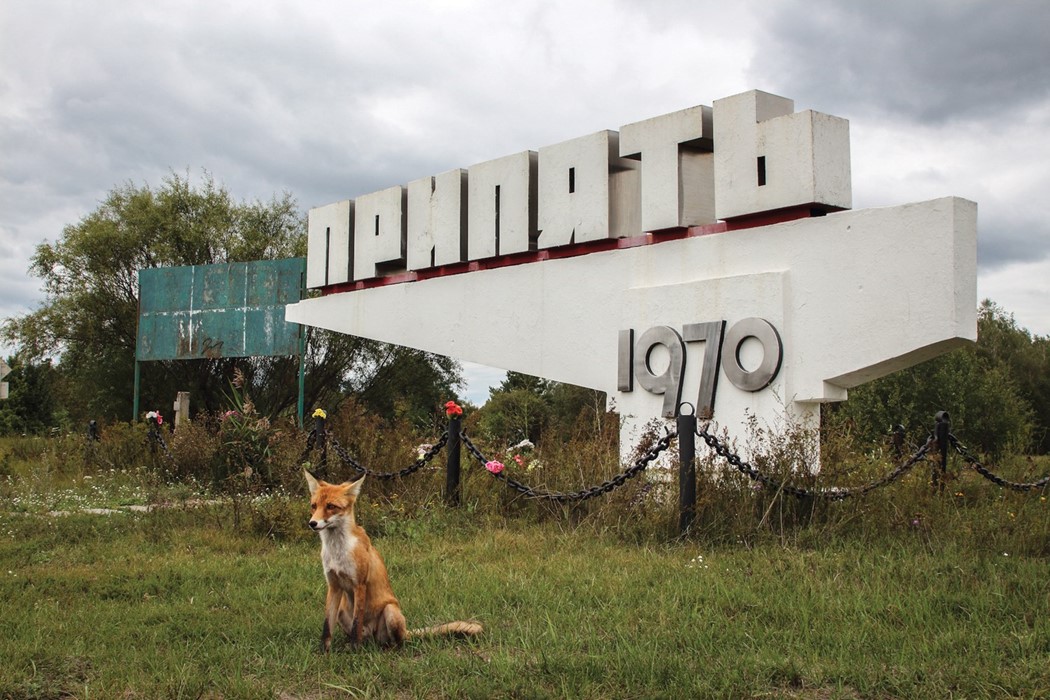
While many authors, journalists and filmmakers were silenced by the regime, some seemed to evade complete censorship. Throughout Chernobyl: A Stalkers’ Guide, Richter refers back to popular culture and how it both predicted and mirrored the absurdities of societal evolution and oppression. Roadside Picnic, written by brothers Boris and Arkady Strugatsky and published in 1972, was not the first science-fiction novel to imagine a hostile wasteland populated with unnatural dangers, but it was one of very few on the matter to be published in the USSR. As Richter explains, “The Soviet cultural policy under Stalin had permitted only near-future science fiction – works that commented directly and literally on the tangible achievements of Soviet science – but relative liberalisation under the Khrushchev regime, combined with the new confidence bought by the growing prestige of the USSR’s post-Gagarin space programme, permitted the Strugatskys to look a little further afield.” Despite being published 14 years before the Chernobyl disaster, the novel reads as a chilling prophecy. In 1979, Russian filmmaker Andrei Tarkovsky released Stalker, a film based on Roadside Picnic. The film focuses on its protagonist’s highly dangerous journey into the central zone of the untouched wasteland, not unlike the illegal hike to the heart of Chernobyl’s Exclusion Zone documented by Richter himself.
